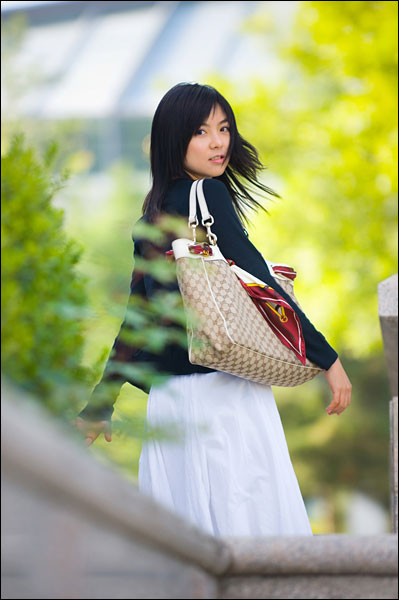Table of Contents
Use perspective in the background to extend the vision
Half-length portraits and full-length portraits pay more attention to the selection of the screen background. The background of the plane is not only monotonous, but also lacks change. Choosing tree-lined paths and corridors with a strong sense of depth can create a picture background with a sense of three-dimensionality and depth.
A background with visual extension characteristics, its effect comes from the depth elements in the background, and the perspective distortion effect of the lens near and far. When composing the picture, on the side of the character’s body in the picture, the elements with a sense of order are arranged in the depth along the distance, forming a background with a sense of linear form in the picture.
The model can choose to rely on the way of standing, using the model as the foreground and visual center of the picture.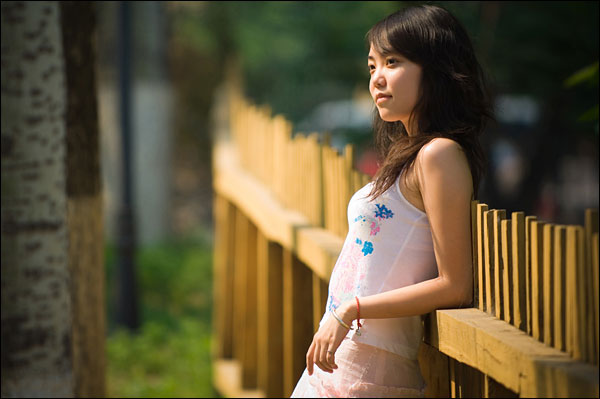
Clever use of cross-shaped composition
Half-length portraits can collect and organize more screen elements. When the background is relatively messy, find their sense of order.
In the grasp and control of the model’s posture, try to avoid rigid symmetry of the limbs. Using the model’s body and various intertwined lines in the background, a Tic Tac Toe composition can be formed. In this example, the photographer chooses a low-angle upside-down shot. The model is located at the intersection of the horizontal and vertical lines of the picture, using the visual guidance of the lines to highlight the characters from the picture.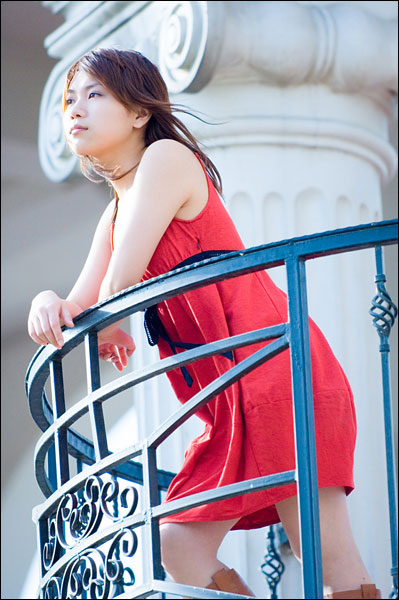
Use diagonal lines to compose pictures skillfully
Whether it is a banner composition or a vertical composition, the body posture of the model is roughly in a straight line in the picture. When the limbs do not have too many movements and changes, the straight and vertical body posture will appear monotonous and rigid.
At this point, the photographer can slightly rotate the camera’s holding angle, so that the person is in a diagonal position in the frame, and the diagonal composition is full of dynamic effect. It can make people like photos that are not rigid, and for portraits, it can express the youthful vigor of girls.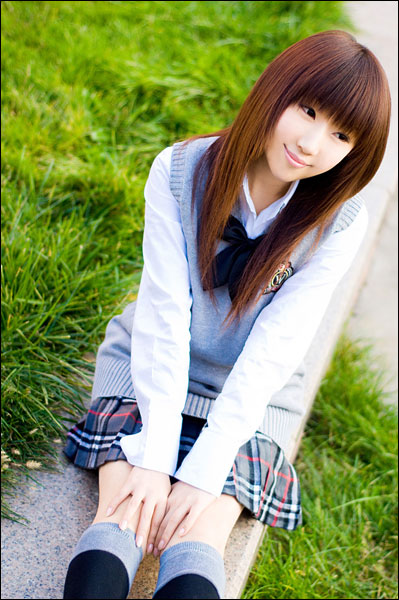
Avoid improper cutting of limbs
Close-up photos mainly show people’s faces. When framing a half-length portrait, it faces the problem of cutting the limbs of the portrait.
Usually, the half-length portrait is cut from the waist or thigh of the model. In the handling of the upper limbs, many film friends make the mistake of cutting the model’s arm when shooting.
Although it cannot be generalized, the cutting of the arm often destroys the overall effect of the picture, making the picture appear abrupt. Incomplete arms cannot be remedied in post-processing. Therefore, the photographer should pay special attention to the movement and position of the model’s arm when composing the image. Through communication and guidance, adjust the shape and posture of the model’s arm to avoid incomplete arms or unsightly arm movements from appearing in the screen.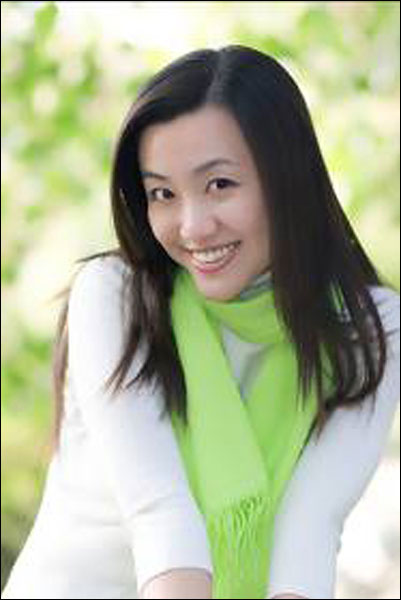
Showing the graceful body curves of the model
The adjustment and control of the pose of the model is the key and difficult point of portrait photography. When shooting a half-length portrait, the photographer can communicate with the model to guide the model’s body posture in the screen to adjust, and use the S-shaped composition to express the model’s graceful body curve.
Half-length portraits can well express the model’s body curve. Whether it is from the front or side of the model’s body, it can well express the model’s elegant posture.
One of the main points of the filming is clothing. In order to obtain the desired effect, the model’s clothing should not be too loose. The photographer should guide the model into a state of confidence and relaxation, while at the same time adapting to the environment. For example, wearing a swimsuit to show the model’s body curve in the sun is an ideal shooting scene.
Use exposure techniques to interpret backlit silhouettes
Using backlighting for portrait creation, you can use silhouette shooting techniques to create works with a strong sense of form and appeal.
In photos taken under strong backlighting and using the limited dynamic range of a digital camera, if the sky is properly exposed, the person in the shadow will appear completely black or nearly completely black due to the extreme contrast of the light in the picture. The effect is that the details of the characters are filtered out, and the outlines of the characters are highlighted.
In order to make the sky properly exposed, the person is underexposed at this time, the photographer can use spot metering, and use the sky as the light metering basis to meter the sky. At the same time, you can appropriately adjust the exposure compensation according to the shooting effect, and then recompose the shot.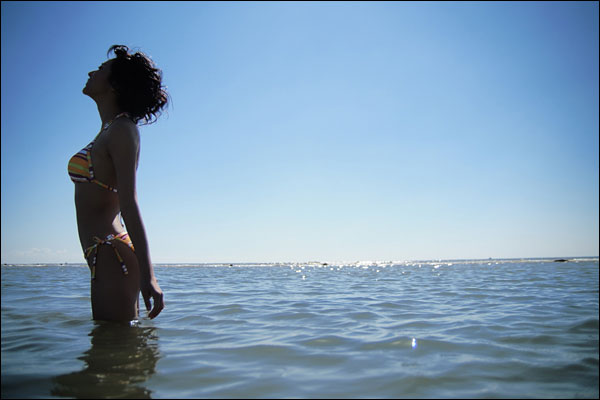
Modification of sitting posture and changes in limbs
In portrait photography, the basic posture of a model is divided into standing, sitting and lying postures, among which the sitting posture is the most commonly used and common character posture besides the standing posture.
The sitting position is divided into two types: front sitting and side sitting. In order to obtain the desired effect of the photo, the photographer should ask the model to sit on the outer part of the chair and maintain a good posture. Don’t sit down in the chair, otherwise the waist and shoulders of the model will be relaxed and lazy. At the same time, when composing the picture, pay attention to the treatment of the legs in the front sitting posture to prevent the direction of the legs and arms from being parallel to the shooting direction. The limbs of the model can appropriately use various movements such as crosses to obtain natural effects.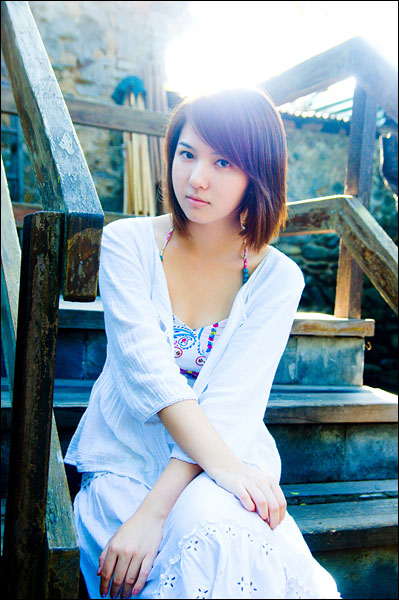
Place a vivid foreground for the picture
Whether it is close-ups, half-length portraits or full-length portraits, photographers often use large apertures to blur the background to create images. In fact, in portrait photography, the introduction of the foreground can often have a very good effect.
The foreground can help the photographer express a certain meaning in portrait photography. For example, a prospect with a blocking effect can express the lively and playful characteristics of the model. The props with auxiliary functions as the foreground can highlight the theme of the picture and the identity of the characters.
In addition, the foreground processing can also be similar to the background blur processing, so that they will not overwhelm the host.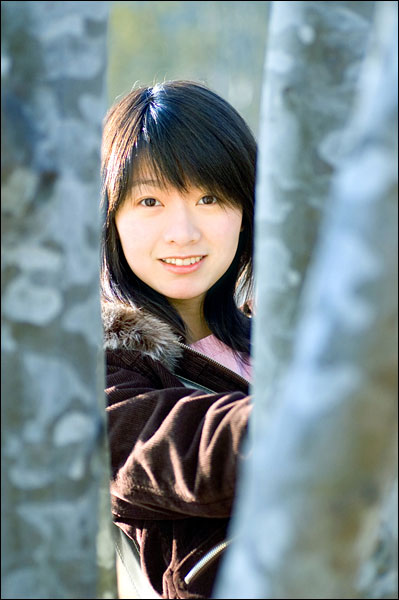
Control the model’s sight to create an artistic conception
In close-up photos, models generally choose to look directly at the camera. In the shooting of bust portraits, the model has more room for free play. It is completely possible to create the atmosphere of the picture through the change of sight and express the inner world of the model.
The eyes of a model can express many different emotions. Such as joy, surprise, waiting, melancholy and loss, etc. The relationship between the model’s line of sight and the lens direction, as well as the model’s own characteristics and expressiveness, are the main factors that influence this effect.
When the model “into the scene”, the photographer must quickly capture the timing of the shooting, so as not to change the status of the model. In this example, the model’s gaze is towards the upper left of the photo, which is thoughtful and reverie.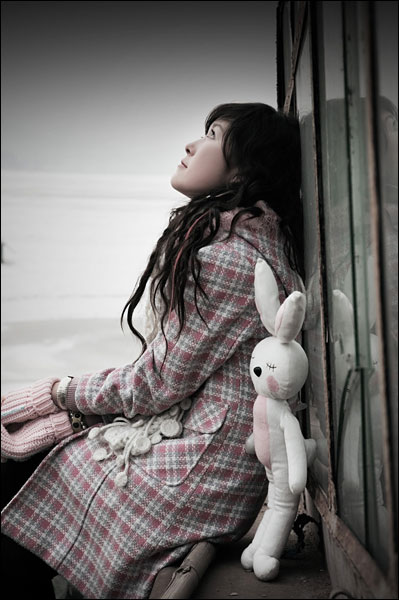
Choose special perspectives cleverly
In addition to changes in composition, the creativity of portrait photography often comes from novel shooting angles. After mastering the general half-length portrait shooting techniques, you should try and innovate more in the shooting angle. Combine lenses of various focal lengths to create a brand-new image perspective.
In this example, the photographer used a high-angle shot, and the model walked out of the underground passage, turned and looked up at the photographer. The model in the picture looks very weak in an industrial scene full of concrete atmosphere. The foreground of the picture not only plays the role of occlusion, but also creates the effect of frame composition. This enhances the expressiveness of the photo’s contrast between rigid and soft.
In many scenes, using low-angle shooting can also get creative portrait photos. The key to success is to keep trying.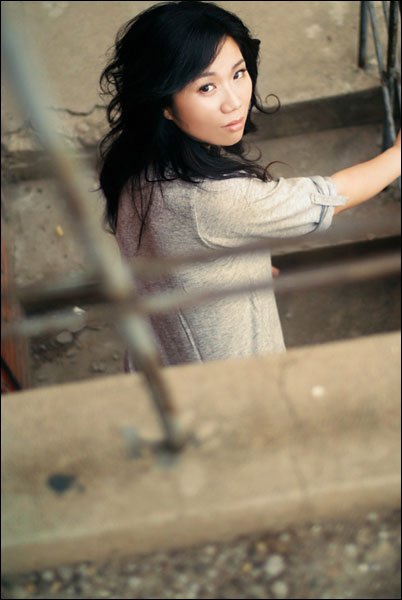
Grasp the lively and natural casual moments
The casual beauty of a model is always fleeting, but it is often the most vivid and true. Photographers may wish to use more flexible expression techniques when creating portraits. For example, continuous shooting and snapping during sports can obtain more real and natural moments.
When the model is in motion, it is necessary to turn on the tracking and focusing function of the digital SLR camera. In actual shooting, the photographer can pre-design a sports route or activity method for the model, and then send a signal to start capturing.
In order to make the shooting effect more realistic, but also to overcome the shutter time lag of the digital SLR camera, it is often better to press the shutter in advance to predict the success rate.